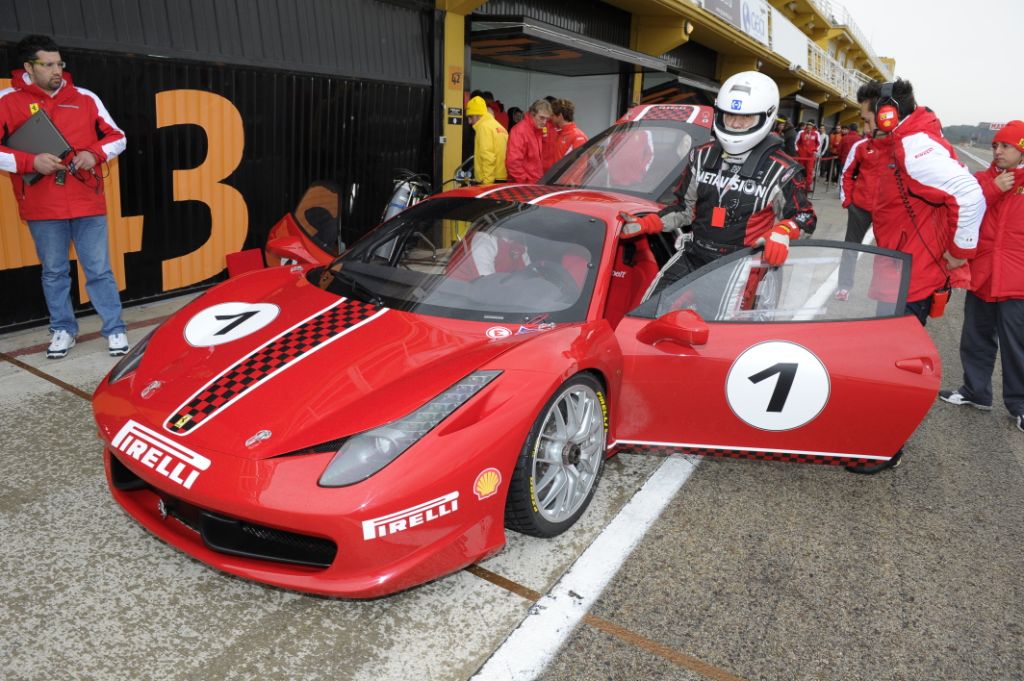
Exclusive for Axis of Oversteer.
One of my favorite things about Axis is finding out who reads it. I got in touch with Hideki Francis Onda after I noticed a comment he had left on a previous post, turns out he's a regular reader and agreed to share with us his impressions of driving the brand new Ferrari 458 Challenge at Valencia, during the recent Ferrari festivities. There are only a handful of people in the world who have driven this car and one of them is....one of us!
Thank you HFO.
read on....
read on....
Hideki Francis Onda is a car nut who in his spare time founded the company that has distributed Apple products in Japan for the last 20 years... He keeps a blog called High Frequency Oscillation.

"I was excited to see that Ferrari had four 458 Challenge cars ready for Corse Clienti drivers upon my arrival at Ricardo Torno circuit. Out of the 4 cars, 2 were in white thus making this the secondary color after Rosso Corsa. It just goes to show that Ferrari is selling a lot of white 458 in the general market.
Getting into the heart of the matter, the 458 Challenge is quite different from your regular 458 Italia road car. You immediately notice that the car is much lower, has two quick fill fuel openings on the side, wears a BBS wheel with Pirelli slicks and has only 2 exhaust outlets in the rear.
Since I own the 458 Italia road car and a 430 Challenge, let me compare them with the 458 Challenge.

Upon sitting in the drivers seat, the 1st thing you notice is that all the controls are on the steering like the 458 Italia. From top they are:
FLASH = high beam
PIT = once in 2nd gear and below 60km, any subsequent press on gas make the car maintain 60km pit speed like a GT car, SCROLL = to scroll LCD data for telemetry and functions
RADIO = voice on off for radio with pit staff,
LEFT and RIGHT = appropriately placed turn signals,
WATER = windshield fluid to clean front,
WIPER = front windshield wipers, and the most important switch of them all, the eDiff 2/1/OFF switch. There are no bars protruding from the steering wheel, just the good old shift paddles on left and right, slightly longer than the road car.
Instead a center rev counter and LCS's on each side, the Challenge has one single large LCD monitor showing you all you need to know. Turn signals, RPM and telemetry data can be observed here by using the SCROLL button. Needless to say the steering wheel is detachable.
The only other controls are located in the center area, the new IGNITION switch with cover and the ENGINE START button below it, LIGHT and RAIN LIGHT switch and the A/C ON/OFF switch with 0-1-2-3 AC FAN rotary switch. There is a power cut off lever wired to the outside of the car as well, standard in any racing cars. Thank god they placed the (R) reverse button where I can see and reach below the center console.
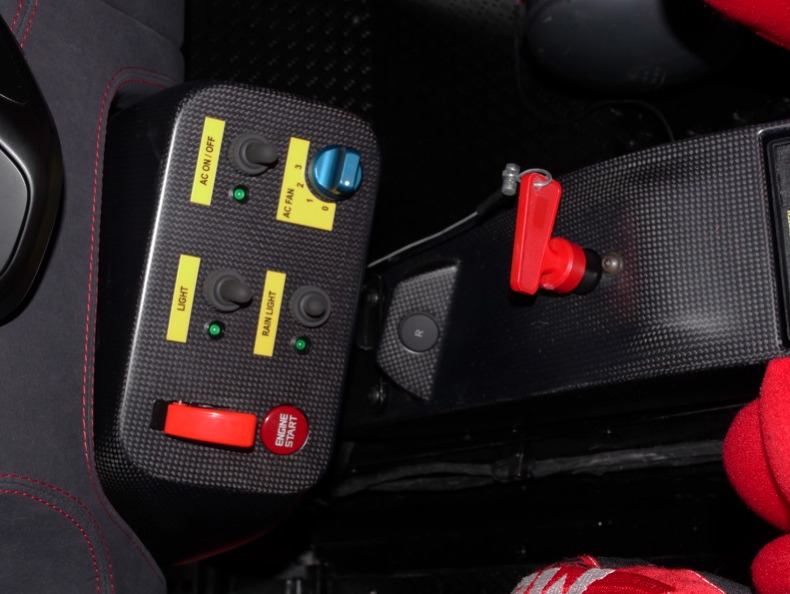
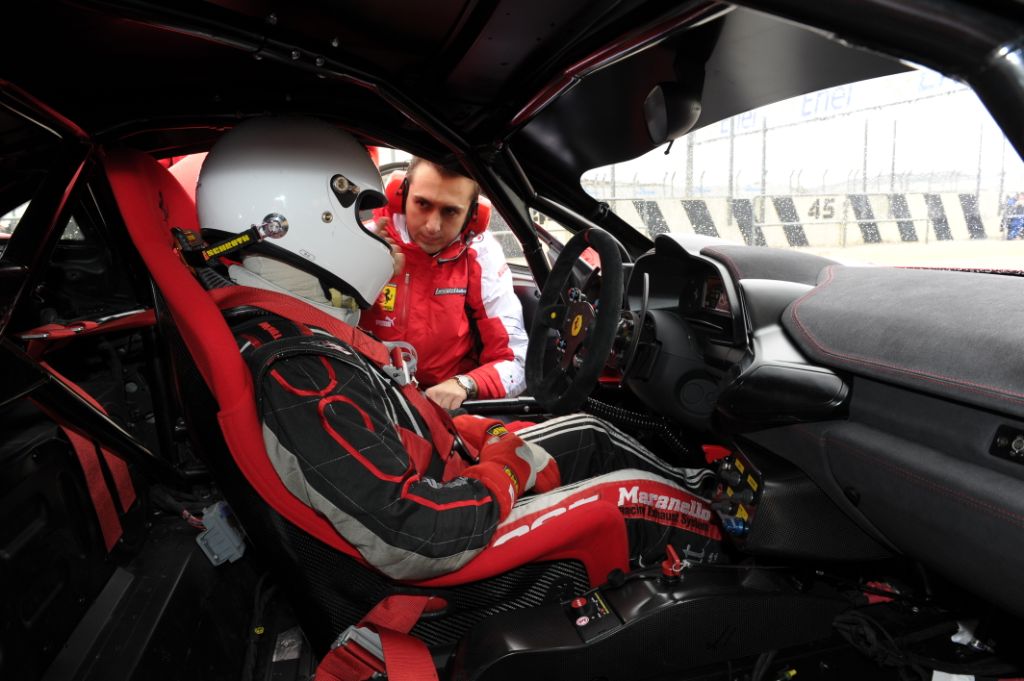
When I sat in the car, I felt very strange because it felt comfortable unlike my 430 Challenge. It felt very roomy like my road car.
By the time I drove the car, the track was partially wet and the Ferrari staff had changed to new rain Pirellis. Since the condition was partially dry and the rain tire was new, I had some problems on my out lap trying to heat up the tires, so time to let eDiff do the work.
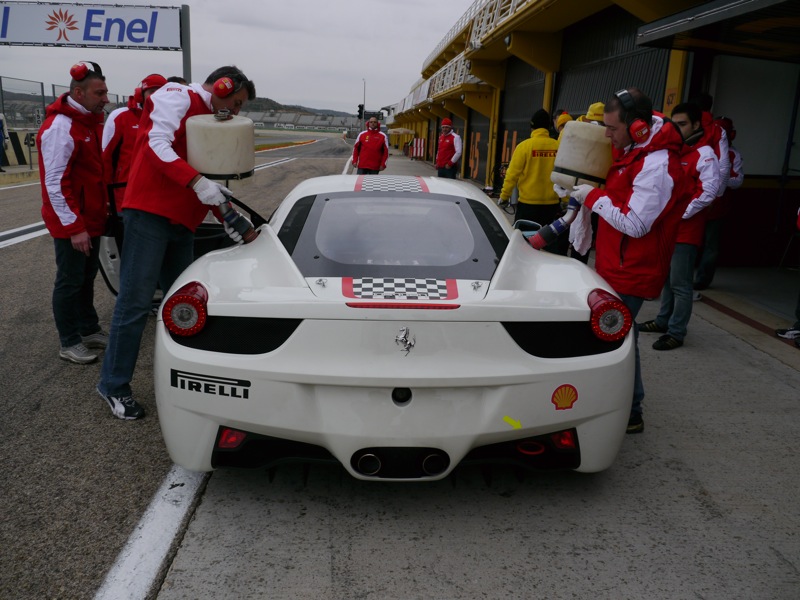
Set on 2, the eDiff assists the driver so that brand new or worn out tires will still keep you in the race. After my out lap I tried the setting 1 but could not notice a big difference since I failed to warmup the car and conditions were not ideal. But once on the circuit you notice something about this car. It has endless amount of power and the traction is translated directly to the road in every way to push you forward. There is very very little loss of traction, so the car has abilities to push you out of the corner and achieve high speed immediately.
Ferrari were the first to develop traction control systems for F1 as performance enhancing aids, not safety nannies. Now banned, these same systems have been added to the 458 Challenge, with the 458 Italia benefitting from the technology transfer adapted for road use. The end result is an electronic system which does not interfere but rather, enhances the driver's ability.
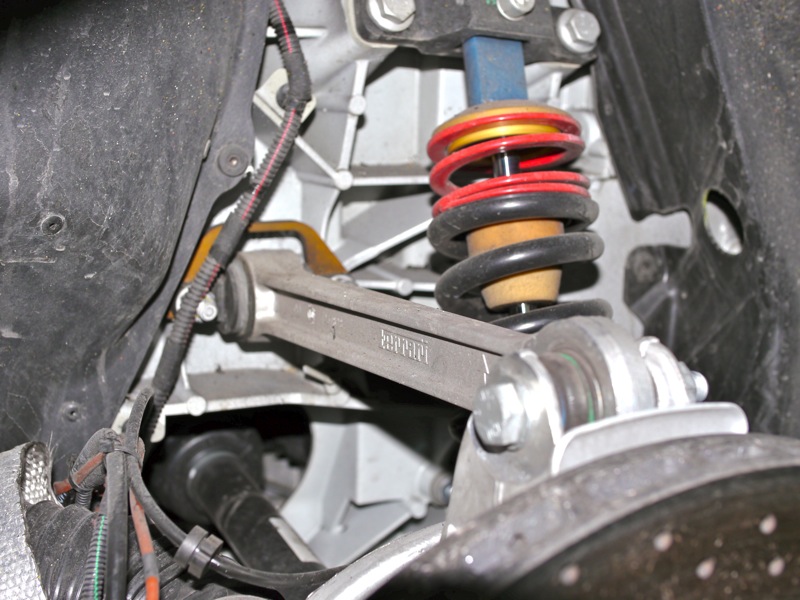
The car also has very little roll. I tested the 458 Italia under similar semi wet conditions in Fuji Speedway and the car has very little roll, but the 458 Challenge absolutely does not roll, you are flat on the ground all the time. If you are used to rolling your head with the car like me on the 430 Challenge beware, it will be a good idea to train your neck for this car.
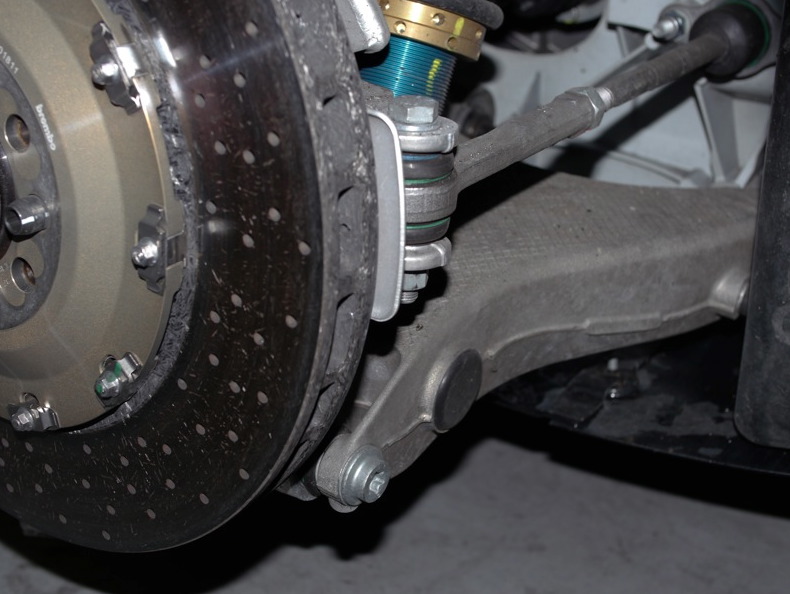
The brakes are also incredible, even at 100m and 220km the car will come to a sudden stop and turning the car is effortless as it just turns and turns and turns without understeer, the nose just dives in when you turn the steering wheel.
I am told the brakes are the same size as the FXX Evo but 8mm thicker in the front. Massimo, who helped develop the brakes with Ferrari, explained the software and pads are a more advanced version than the FXX Evo. Brake disk will last you one race season but pads will last only 2 day race weekends. The compound used for the pads is special and visibly is different from the street cars.

The shift up and down are amazing as well. The racing dual clutch produces no jitter when shifting, very similar to the road car. The engine under eDiff Off produces rapidly rising RPM, you need to be shifting quickly as the rev LED goes quickly from green to red zone.
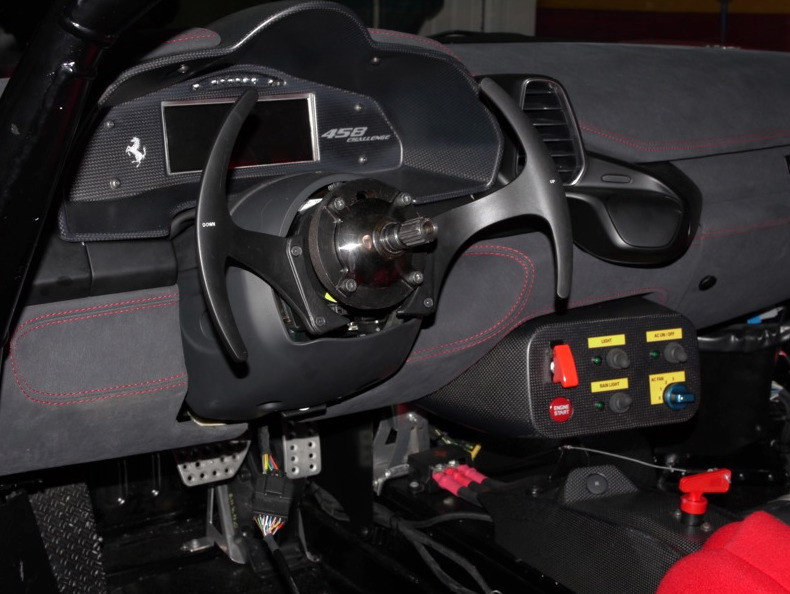
All in all this is one of the finest race car Ferrari has ever produced, attested by the fact that they had to de-tune it because it had so much traction power on track, a testament to the achievement of eDiff traction control. Ferrari engineers shared some light on how one would use the 2-1-OFF settings. When asked "does the 2 or 1 setting interfere with drivers like the ASR on 430 Challenge?" Ferrari "No, a professional driver can drive just as fast on OFF or 1, this is a new concept not to be confused with ASR on 430 Challenge or 458 Italia road car. So if you are running a long race, you may start out by using OFF or 1 to start the race, as your tire wears out, or it rains, you can set to 2 to allow you to continue an aggressive race and survive."
The car weighs only 1150kg even with the 20kg air conditioner installed and has a 48:52 weight ratio. "Everything about this car is different from the road car. Even the frame is different." says Ferrari. To my delight I was told that Ferrari is developing a GT3 kit with Michelotto and will provide these in the later half of 2011 as genuine Ferrari Parts.

You cannot compare the 430 Challenge to the 458 Challenge. Like comparing 430 and 458 road car, there is no comparison so it is correct to assume that 458 Challenge is in a league on it's own and will win many many GT races all over the world in 2011.
In 430 Challenge you only have ASR, which is brake and engine cutoff control. In 458 Challenge in settings of 2, you have slight management of these both, but it is the pneumatically controlled electronic differential that does most of the job to keep you running fast without wasting any traction elsewhere. This is a real leap of technology. Although Ferrari would not admit it, a tuned 458 Challenge will probably beat a lot of their high end special cars like the XXs."
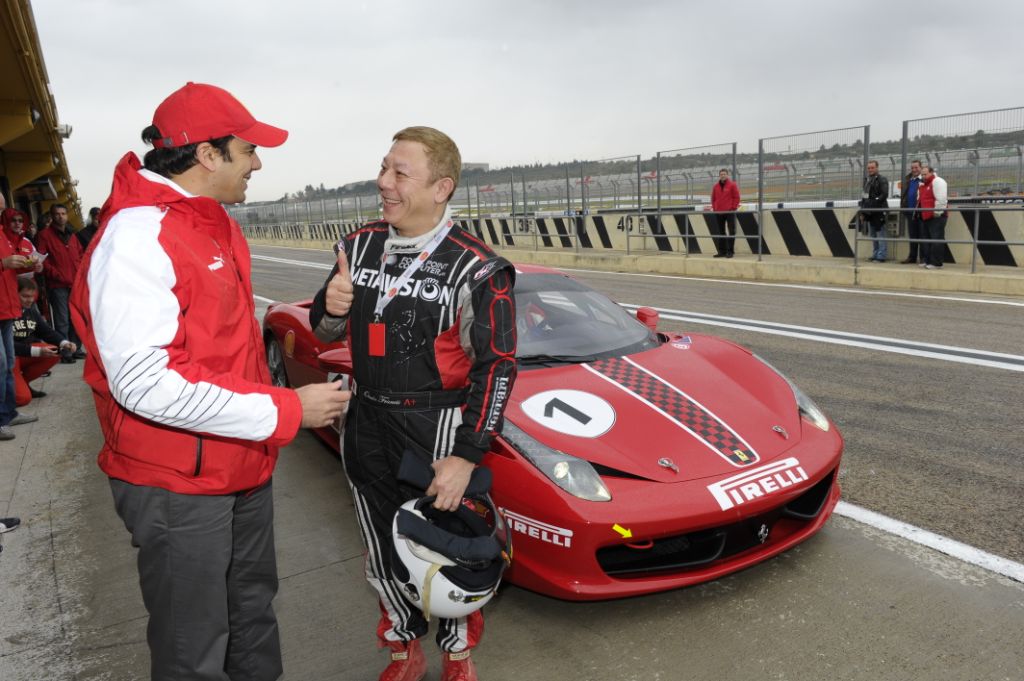
photos by Hideki Francis Onda HFO.JP
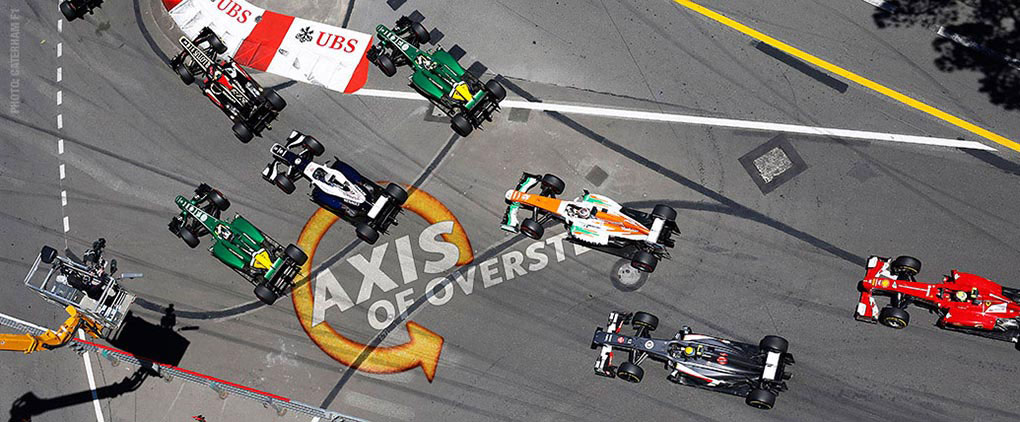
Fantastic read. These are absolutely amazing machines.
ReplyDeletethat rear suspension shock mount is interesting, with the blu square section shaft... never seen one like that
ReplyDeleteThose brake pads are the size of a NYC studio!
ReplyDeleteAbsolutely spectacular! This post is Freep approved! Nice work.
ReplyDelete-Freep
Everyone's been complaining that the 458 has gone up in price over the 430 but from reading stuff like this it seems like the price is well justified.
ReplyDeleteFantastic read, you are a lucky Man Onda San!
ReplyDeleteGreat review reposted with a link to here over on my blog http://www.wheelsnheels.tumblr.com/ hope you don't mind.
ReplyDeleteAwesome Review! Thanks for sharing. Very useful for me. Personally, if it weren't for the higher initial cost, I rather race F-Challenge than GT3 Cup Patron Challenge. The Car is just so superior (and proper midengine with proper gearbox!)
ReplyDeleteGood to see they increased the longevity of the CCB rotors. The biggest cost of racing the F430 Challenge is that you are forced to replace all rotors each 1000kms of racing! That's a $20K job! Other than that FChallenge cars are cheaper to run than GT3 Cups.
The 458 CH seems so civilized for a race car...A/C, beautifully stitched alcantara dash...
ReplyDeleteGreat article. Thanks.
ReplyDeletenM3 from the mLounge.
Very amazing read, thanks for the useful information.
ReplyDeleteThe brake pads are the same shape and size used by the F430 Challenge and 430 Scuderia. These two cars were already using the FXX front brakes (398mm x 36mm).
The most surprising info (but I won't believe it until I see the car on the scales) is the 1150 kg weight already with AC. The F430 Challenge doesn't have AC and it weighs 2,750 lbs with no fuel but all the other fluids topped. The F458 is a heavier car (dual clutch tranny + heavier engine), so I think the real weight of the F458 Challenge with no fuel would be around 2,750 lbs as well, but obviously with much more carbon fiber than the F430 Challenge.
The next generation Stradale/Scuderia based on the F458 (the F458 Corsa) is looking promising.
Great perspective of a car that marks pinnacle of what focused engineering in 2010 is capable of.
ReplyDeleteThanks for sharing!
The video is great too! Just look at the size of the rear brakes... Phew!
ReplyDeleteArticles like this one harden my fealty to Axis.
ReplyDeleteGreat post and excellent review. Thanks for sharing.
ReplyDelete